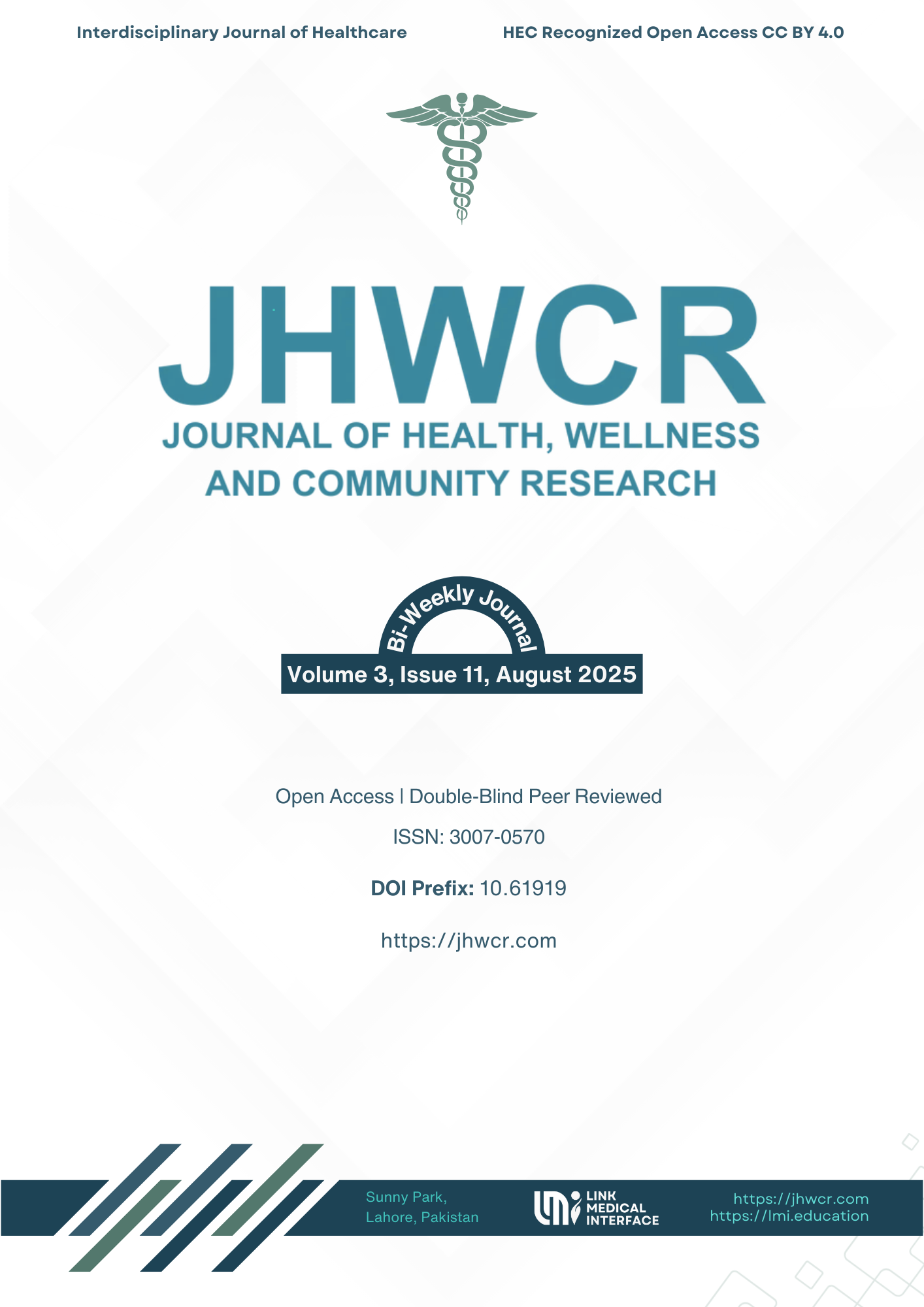Evaluating the Association Between Vital Signs and Pain Scores in the Emergency Department of a Tertiary Care Hospital in Peshawar, Pakistan
DOI:
https://doi.org/10.61919/27h9ys78Keywords:
pain assessment; vital signs; emergency department; Numerical Rating Scale; PakistanAbstract
Background: Pain is one of the most frequent complaints in emergency departments, and accurate assessment is critical for timely intervention. Although self-reported pain scores remain the gold standard, clinicians often reference vital signs such as heart rate, blood pressure, respiratory rate, and temperature as indirect indicators. However, evidence for their reliability as measures of pain intensity is inconsistent. Objective: To evaluate the association between routinely measured vital signs and self-reported pain scores in adult patients presenting to the emergency department of a tertiary hospital in Peshawar, Pakistan. Methods: A prospective observational study was conducted over one month (March 01 to 31, 2025), enrolling 199 adult patients presenting with pain as their primary complaint. Vital signs were recorded upon arrival, and pain intensity was measured using the Numerical Rating Scale. Pearson’s correlation coefficients with 95% confidence intervals were calculated to assess associations between each vital sign and pain scores. Subgroup analyses were conducted by sex, age group, and pain etiology. Results: No statistically significant correlations were observed between pain scores and systolic blood pressure (r = –0.047, p = 0.531), diastolic blood pressure (r = 0.113, p = 0.139), pulse (r = 0.063, p = 0.365), temperature (r = 0.040, p = 0.621), or respiratory rate (r = 0.031, p = 0.710). Abdominal pain was the most common presentation (40.7%). Paracetamol-based regimens were the most frequently used interventions (46.9%). Conclusion: Vital signs do not reliably reflect self-reported pain intensity in emergency department patients. Patient-reported scores should remain the primary tool for pain assessment, and individualized, context-specific management strategies are essential.
Downloads
Published
Issue
Section
License
Copyright (c) 2025 Muhammad Abas Khan, Syed Zain Ul Abidin, Khushbakhat Aziz, Noman Shahid (Author)

This work is licensed under a Creative Commons Attribution 4.0 International License.


